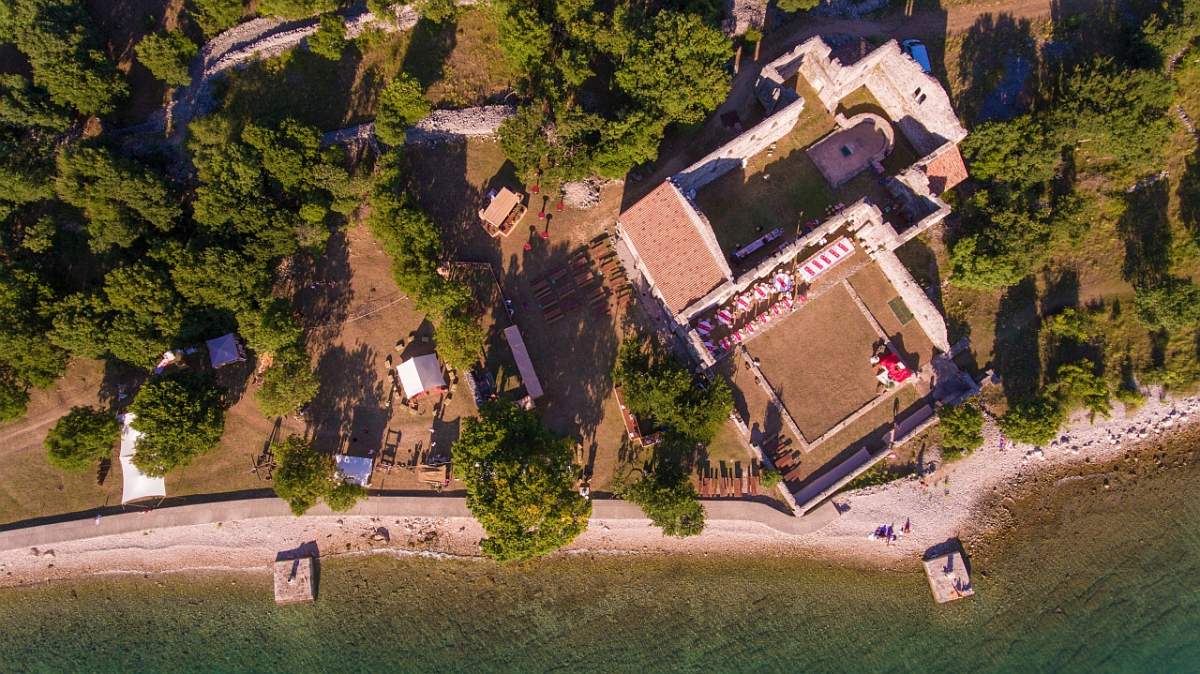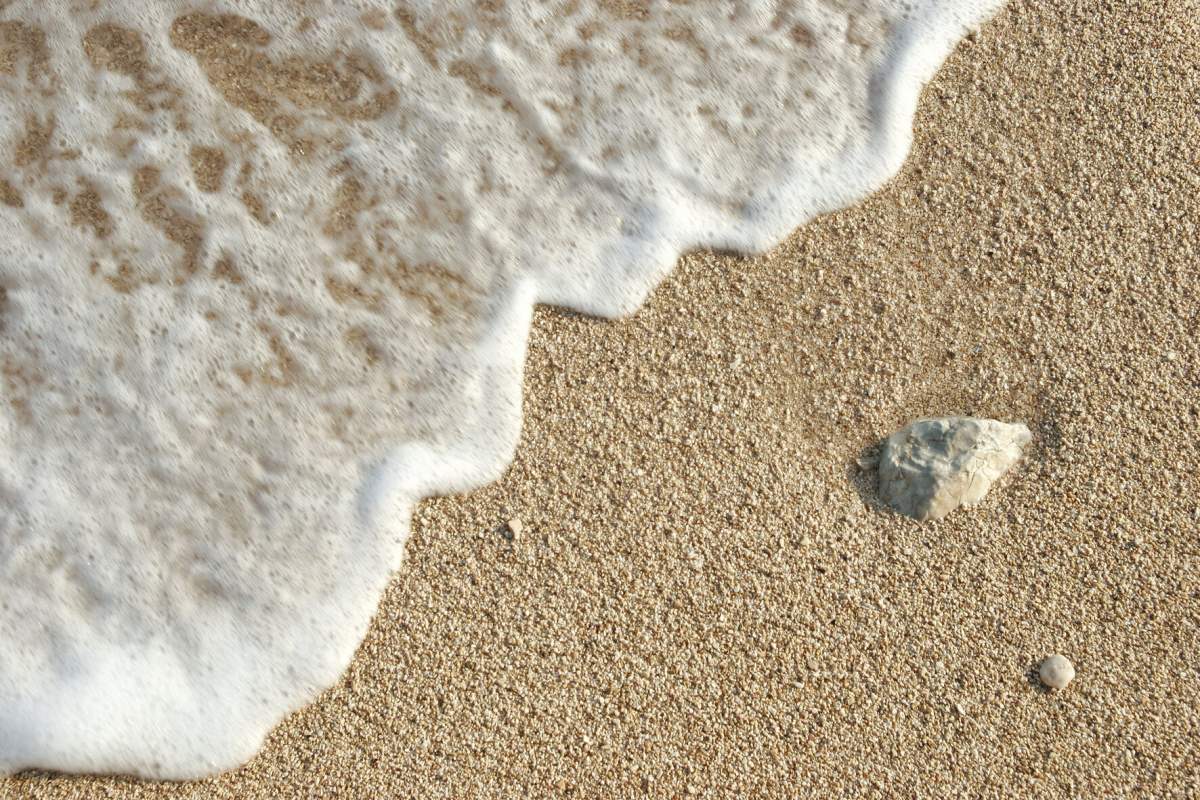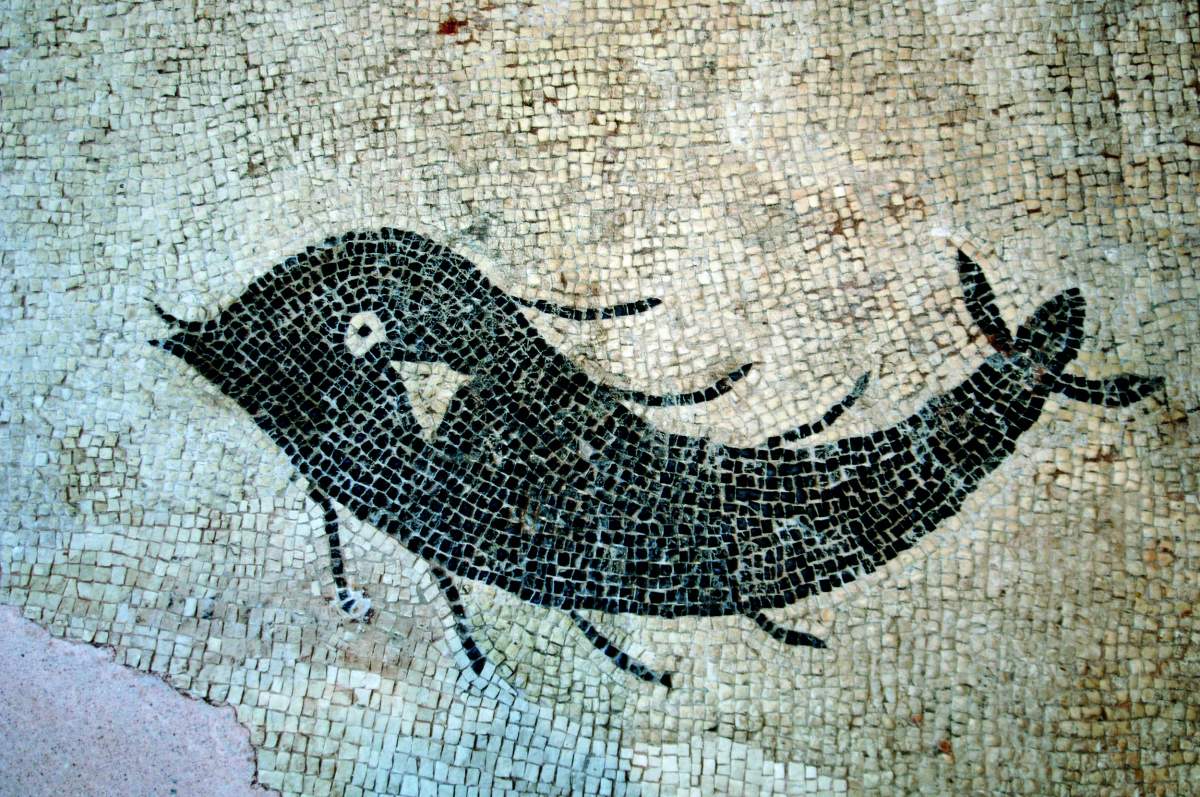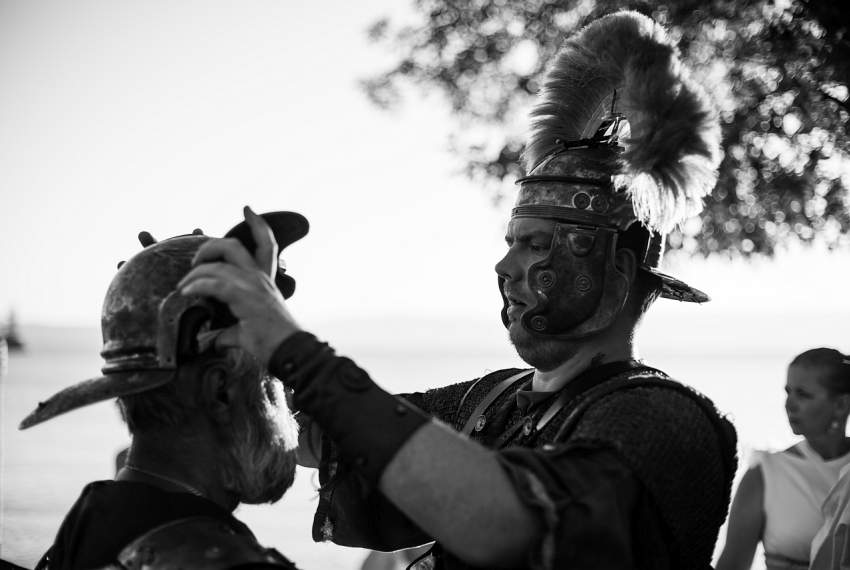Beneath the surface of the sea around Krk and Kvarner lie Roman cities, harbours and stories waiting to be discovered. Dive into history – no diving gear needed, just a curious eye and an open mind.
As you walk along the coast or watch small boats rocking gently on the Adriatic, it’s hard to imagine that just a few metres below lie the remains of another world – the Roman Empire.
Across Kvarner, and especially around Krk Island, the sea has slowly, almost invisibly, covered ancient Roman towns, harbours and warehouses.
Today, these traces rest just below the surface – a perfect invitation for an excursion that connects history, nature and storytelling.
Where the Sea Keeps Roman Secrets

Omišalj – Fulfinum and Mirine
On the western coast of Krk lies one of the most impressive archaeological sites on the Kvarner Gulf.
The Roman town of Fulfinum and the early Christian complex Mirine stand right by the sea, with parts of their ancient shoreline now underwater.
During low tide – or with a hint of diving spirit – you can spot the foundations of buildings, piers and warehouses that once belonged to a lively trading port.
Baška – the Ancient Harbour Beneath the Waves

In the shallow sea near Baška, the remains of Roman storage buildings have been found – most likely connected to trade in wine, oil and fish.
Today, these underwater relics attract divers and history lovers alike, and can sometimes be seen from the shore at low tide.
Caska (Pag Island)
Although located outside Krk, Caska is worth mentioning.
A whole Roman settlement here sank beneath the sea due to tectonic movements.
Walls, streets and house foundations still lie underwater – a true underwater Pompeii.
Why Did the Sea “Swallow” the Romans?

Sea levels during Roman times were around one to one and a half metres lower than today.
Changes in the coastline were caused by a mix of climate cycles, tectonic shifts and post-glacial uplift.
The Romans built right by the water, never imagining their cities would one day become underwater archaeological sites.
Fascinating Facts from the Roman World

Roman concrete still endures – its mix of lime and volcanic ash made it stronger in contact with seawater.
The Romans had their own “ketchup” – garum, a fermented fish sauce traded across the empire.
Recycling, Roman style – broken amphorae were reused for paving, foundations or even tombs.
The sea hides stories – at Fulfinum, you can walk by the water and see the outlines of ancient life now resting under the waves.
Plan Your Day on Krk – Follow the Roman Traces
If you love combining the sea and history, plan a day to visit these locations:
Fulfinum and Mirine (Omišalj) – explore the remains of a Roman town and an early Christian basilica.
Baška – enjoy a seaside walk with views of underwater ruins and a visit to the area’s Glagolitic heritage.
Add a bit of imagination, a good camera and a glance toward the horizon – and your day becomes a journey through time.
Start your own journey through Roman history

If you love stories that unite nature, history and the sea, this is your kind of trip.
No need for diving gear or a time machine – just curiosity and a coastal walk.
The Roman traces are there – waiting to be rediscovered.
Would you like more stories like this?
Follow us and share the article with someone who would enjoy a journey through history beneath the sea!
If you feel inspired by such thematic excursions, get in touch – we’ll gladly create a tailor-made experience just for you.
Whether you’re drawn to history, nature, local food or hidden corners of the island – we’ll craft a story that fits you perfectly.






 +385 51 604 400
+385 51 604 400 +385 91 516 78 58
+385 91 516 78 58 info@mare-vrbnik.com
info@mare-vrbnik.com





